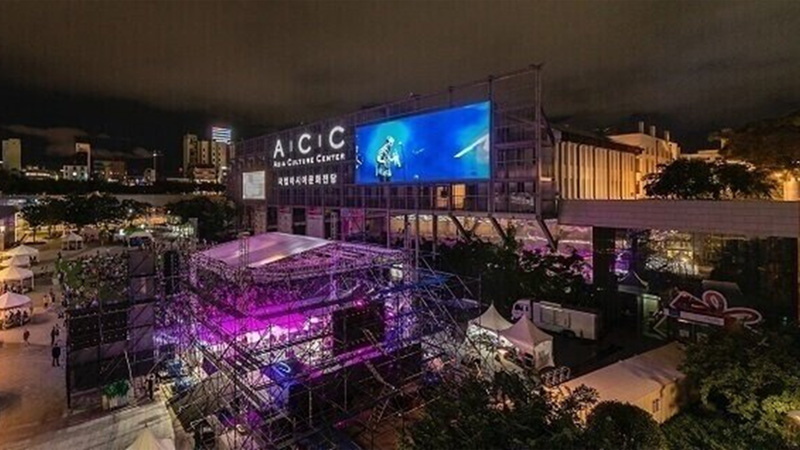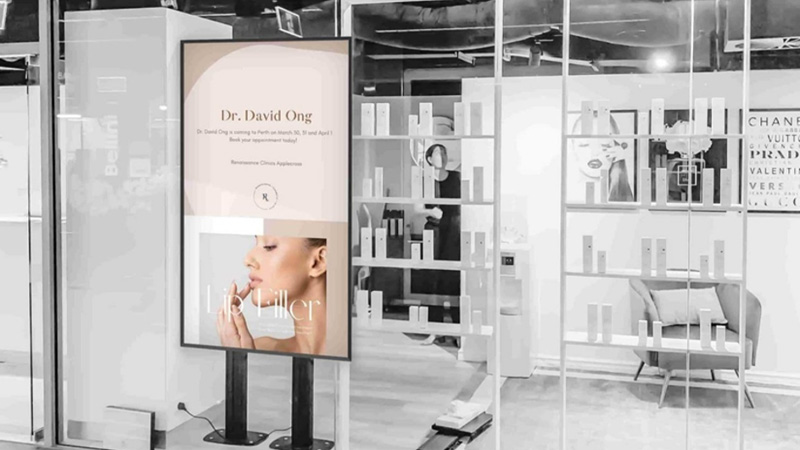
Choosing Between Indoor and Outdoor Displays for Your Business
Thanks to some serious technological innovation in the digital display industry, it’s just so exciting to see just how many businesses (both big and small) are using digital signages for both indoor and outdoor settings.
And why not? These strategies are hailed as very effective and captivating ways to communicate with customers. With beautiful display screens available in varying sizes and qualities, businesses can project mesmerizing content to inform, attract, and convert potential customers.
Whether you’re looking for an indoor or outdoor unit, one of the major considerations of getting a nice digital screen to communicate your brand or service is learning the differences between indoor and outdoor display units. And that’s exactly what we’re going to talk about! Without further ado, let’s dive into learning some key differences in outdoor vs. indoor displays and how to choose the best technology for your business.
1. Understanding the Meaning of Indoor LED Screens in a Nutshell
2. Understanding the Meaning of Outdoor LED Screens in a Nutshell
3. Is It Easy to Tell the Difference Between an Outdoor vs. an Indoor Display Unit?
4. Knowing The Most Important Attributes and Aspects of Indoor and Outdoor Display Units
5. Selecting an LED Display Unit Based on Performance and Quality
6. The Cost of the LED Display Units
7. How LEDSINO Has Become a Preeminent LED Display Player in the Global Screen Market
1. Understanding the Meaning of Indoor LED Screens in a Nutshell
Well, the name is kind of self-explanatory but it’s important to be clear on what it implies. You see, indoor LED screens are essentially used inside shops, restaurants, exhibitions, large offices, and much more.
Depending on the products or services being displayed, businesses tend to use medium to large-sized display units to promote their brand clearly and more captivatingly.
You must’ve also seen such screens in banks, grocery stores, etc. These things are everywhere! However, the square footage of indoor screens also varies between 1 square meter and a maximum of 10 square meters. But that thing is, in terms of brightness, picture contrasts, and sharpness, they can’t match the performance of outdoor LEDs.

2. Understanding the Meaning of Outdoor LED Screens in a Nutshell
Outdoor LED screens and accessories are primarily designed to be used for outdoor events and marketing. However, do keep in mind that outdoor display units come in superior quality and features compared to their indoor counterparts.
For example, because these units must be put on display in the natural environment, they’re built-in with waterproof and heat-resistance technologies. Plus, because outdoor screens are positioned to attract many people, their display technology is far brighter and sharper.
What’s more, outdoor units are also way bigger in size compared to indoor screens to comprehensively display a brand’s products and advertisements on a massive scale.
But with, you should also keep in mind that, as a small or big business, you need to ensure that you opt for the best display technology vendor and installer as there can be a variety of issues when it comes to installing outdoor units.
From overheated wiring to faulty installation and negligence, these are all problems that can adversely affect your outdoor marketing events. You may have seen large outdoor LED screens outside of shopping malls, concerts, sports events, gaming events, and much more.

3. Is It Easy to Tell the Difference Between an Outdoor vs. an Indoor Display Unit?
For individuals or businesses looking for quality LED screens to propel their marketing or organize an event, this is a very good question.
The answer is, yes. You see, to distinguish between LED screens for both indoor and outdoor applications, the only major factor that you need to keep in mind is, well, size.
Outdoor TVs or screens are always going to have big to massive screens. Moreover, you’ll also immediately notice the luminosity and pixel quality of outdoor screens vs. indoor LED TVs. The latter will never be able to match the former in terms of functional quality.
But still, even if you do know how to spot a good outdoor or indoor LED unit, it is still strongly recommended that you seek an expert manufacturer or company to ensure you get the most bang for your buck and guarantee that the product lasts a long time.
4. Knowing The Most Important Attributes and Aspects of Indoor and Outdoor Display Units
Screen Specifications and Size
There is a wide array of LED screen sizes and specifications from P 0.9 all the way to P4 (which is mainly for indoor units) and P5 to P10 (which is for outdoor units).
So, with, it is strongly recommended that you select a size and specification that is more suited to the activity or application you need the indoor or outdoor screen for.
Aspect Ratio
You need the LED screen to be nice and sharp, especially as a brand wanting to promote your products and services no matter whether the screen is an indoor or outdoor one.
You need to ensure that your target audience gets a beautiful and mesmerizing visual experience. Two of the most common aspect ratios used for enhanced visual experience are 4:3 and 16:9 and you can use each one interchangeably depending on the type of content being displayed.
Color and Sharpness
In terms of visual characteristics, there’s a variety of qualities that LED screens come in – for example, you go for monochromatic visuals (which will mainly display a single color), a dual-color LED (which will display 2 red colors and 1 green color), and full-color (which displays a slew of colors and sharper imagery).
The most popular type of LEDs, when it comes to visual experience are full-color display units for both text and video-based content.
Selecting The Best Display Models
Both indoor and outdoor LED display screens come in a variety of models and specifications. Common indoor LED screens are typically labeled P0.9 to P4. Outdoor LEDs come in P5 to P10 specifications.
So, it is vital that you choose a display unit in accordance with the environment and application you need to use the screen for. It’s not advisable to use outdoor screens for indoor usage and vice versa.
For instance, if you’re seeking an outdoor screen for your brand marketing, you’ll need a larger display screen that provides significantly vivid colors and image sharpness with seamless transitions between content.

5. Selecting an LED Display Unit Based on Performance and Quality
Superior Visual Quality
This applies to both outdoor and indoor LEDs. It doesn’t matter whether you’re using a screen in a restaurant, mall, an event, concert, etc., it is important to ensure the screen provides high-quality imagery with sharp and rich colors.
Fortunately, there’s a wide range of exceptional LED screens that come in different display qualities that you can consider by what you intend to use it for.
For example, for indoor LED screens, you can go for budget-friendly options such as HD (720p) TVs, which can be great for displaying text-based or image-based content marketing. Or you could also opt for a UHD (Ultra High-Definition) 1080p display.
For outdoor screens, because the screens need to be bigger compared to indoor TVs, you can choose to go with 4K UHD systems that produce more than 8 million pixels. While this will be an expensive option, the display and color sharpness will be out of this world!
Performance Versatility
Indoor LED displays are mainly placed in a fixed position for a more central view, which means apart from regular maintenance, such as cleaning the screen, you won’t have to worry about anything.
Outdoor units, however, are another story. For external displays, you’ll need to consider getting LED screens that are built-in with weatherproofing features such as heat and water resistance. In addition, you’ll need to ensure they are just as flexible so that splicing the screen is easier, helping it to be viewed from different directions.
6. The Cost of the LED Display Units
Finally, your choice of indoor or outdoor LED screens will also hinge on your overall budget. High-quality screens are expensive, especially when you talk about UHD and 4K UHD variants. Plus, there is a vast price difference between smaller (indoor) units vs. larger (outdoor) display units.
But there is a workaround to this issue. You can always seek reputed companies that provide these screens on a rent basis. This can be a godsend for companies that wish to use larger outdoor screens temporarily, paying monthly rent and not having to contend with maintenance and installation charges (in most cases)

7. How LEDSINO Has Become a Preeminent LED Display Player in the Global Screen Market
Having been operating in the display industry for more than 10 years, LEDSINO has quickly made its name as a reliable and reputed LED screen and accessories seller and manufacturer. We have worked with a variety of some of the world’s leading brands when it comes to providing outdoor and indoor LED display units.
From our popular Rental RX-Series and ES960-Series Display to the SA640-Series and XA600-Series, we provide exceptional LED commercial display units for both indoor and outdoor usage.
We have catered to large-scale marketing exhibitions, concerts, home theaters, business seminars, and much more, using state-of-the-art, proprietary technology. What’s more, we also provide display unit rentals for short-term usage, providing quality installation processes, guaranteeing time efficiency and operational effectiveness.
8. Bottom Line
There you have it, a comprehensive analysis on the key differences and factors to consider while choosing between indoor display units and outdoor screens.